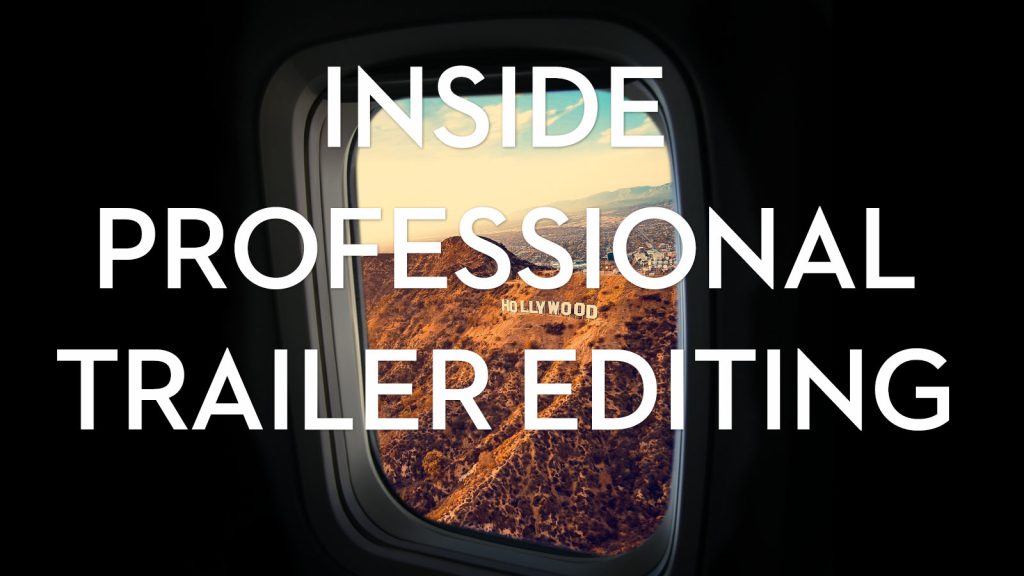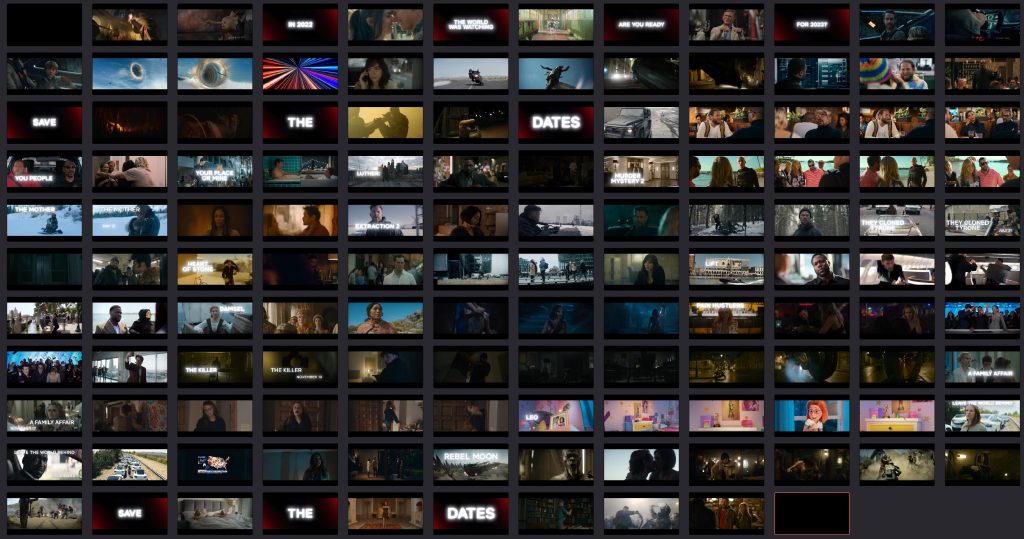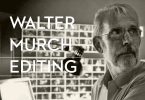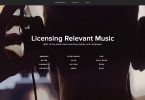
Trailer Editing. It is an art unto itself and it comes with very specific techniques, procedures and requirements that make doing it successfully a huge challenge.
That’s why I think all editors should learn to cut trailers – because doing so will teach you important skills and ways of considering storytelling through sound and images, in a way that other projects can’t.
In this article I’m going to share with you some superb insider insights, from some of the industry’s best trailer editors, on how to edit trailers effectively.
And the way they’ll do this is dissecting some of their best work.
Here’s what’s ahead:
- Breaking Down The Hidden Mechanics of Trailer Editing
- Trailer Editor Breaks Down Iconic Trailers
- How to Cut a Sizzle Promo
- How to Build a Multi-movie Promo Trailer
- The Truth about the Trailer Industry
Learn A Lot About Editing Trailers – 45 mins of Free Training
Check out these three previous posts for even more resources and free training on editing trailers.
But if you’re interested in really mastering trailer editing, there is no better course available than Film Editing Pro’s The Art of Trailer Editing.
They’re giving away 45 minutes of free taster training, which you can access here.
The three free lessons cover:
- Trailer Editing 101: The Secrets of the Craft
- Trailer Sound Design and Music Techniques
- Trailer Editing Behind the Scenes: Deconstructing the Cut
You can watch the first lesson in the video above and get part 2 and 3 via email here.
Check out The Art of Trailer Editing in more detail here and learn more about the course from my interview with its creators.
Breaking Down the Hidden Mechanics of Trailer Editing
we get to hear two expert trailer editors dissect the hidden mechanics that shaped some of the best trailers of the past few years.
And they would know, because they actually cut them.
One expert discussing their craft is pretty good but what’s even better is two experts talking to each other at an expert level. Their conversation is that much richer and more advanced than when an uninformed interviewer asks them basic questions.
I’ve learned a lot from veteran trailer editor James Rowney’s Making The Cut and I think you will too.
Plus it’s really well edited.
Making The Cut with Trailer Editors
James Rowney has been editing trailers for 12 years with impressive titles such as Only God Forgives, Babylon, Dune and Ambulance on his reel.
He also knows some of the best editors in the business and how to get them to reveal their secret sauce. One of those editors is Adam Gonzales, an editor and Creative Director at AV Squad.
The thing that sells this scene too is the human noises; it’s the guy yelling, it’s the reaction shots.
Adam Gonzales, Editor
When she snaps the rope and hits they guy in the balls, you feel how bad that hurts.
Their discussion is a mini-masterclass in trailer editing that covers:
- The Open – Establishing Character, Location and Unique Action Style in 10 seconds or less
- The Story – Establishing the ‘story engine’ without building the whole car, not answering every question
- The SFX – Syncopated action sound design, Music Math for maximum impact, how to finish a track that has no back end.
- Music – Creating an 80’s hip hop mash up with Kanye’s Blkkk Skkn Head and Depeche Mode’s Personal Jesus
- Structure – Modular with constant progression. Making your music last. Avoiding creating a wall of noise.
- Philosophy – “Making a V1 that my friends at work think is cool.”
Too many practical takeaways to list but:
Progression
How do you make your music last? It’s about making sure that you always have progression in your music, and each one of those progressions should happen after you’ve finished giving a piece of information. They’re chapter breaks. Where as sound design and action beats are punctuation and maintaining the energy throughout.
Making It Special
I’m very moments focused as I’m breaking down the film. What are the things that I really enjoyed when I’m watching it and how can I use those in the trailer?
What is the minimum amount of information I need to know to care who these people are and what their goal is and then contextualise the action that I’m seeing so that I’m not lost and then just lean into whatever makes it special.
Hereditary – Sprinkle in the Special
Tommy Malatesta is a Creative Director and Editor at AV Squad who has cut a fair few trailers for A24, including Bones and All, Men, The Northman, Everything Everywhere All At Once, and Green Knight plus a huge list of other amazing titles.
His approach in the Hereditary trailer to crafting tension, building suspense and artfully creating scary scores from sound effects is second to none.
- The Open – “Show people something they’ve never seen before.”
- The Logo – “You gotta treat the logo.” (Especially for A24)
- The Music – “I always gravitate towards strings.”
- The Story – Finding the thematic speech you can hang your hat on.
- The Graphics – Use them to let the viewer know what to think. They also help skip over parts of a traditional three act structure
- The Scares – To learn what tension is in a horror trailer was very valuable to me.
- Philosophy – Present and ask questions, or even just one big question. So the trailer is the question and the movie is the answer.
Strings Not Drums
I’ll use stems of tracks as sound effects. I never want drums. You can always use sound effects to create those drum tracks (clicks, punches, noises) and using sound effects is better than a regular drum track, as you are able to manipulate whatever sound you want there.
The Core Speech
When I’m breaking down the movie I’m always looking for that conversation or that speech that hints at the themes of the movie but isn’t specific. Basically it leaves you asking questions.
Scares
It’s not the jump scares that are scary it’s the tension that makes you hold your breath and say ‘What’s coming next?’
Telegraphing Sound
A trick I like to use is to introduce a sound effect without the picture attached to it. And then in the next measure of music I will have the sound effect again but now with the picture.
It’s a little trick to getting the viewer used to the sound effect and then realising it’s something way more sinister.
More Episodes of Making The Cut
More episodes of Making The Cut are coming soon, so don’t miss them!
Trailer Editor Breaks Down Iconic Trailers
In this Vox interview with Buddha Jones trailer editor Bill Neil, you can get a sense of the arc of the industry, from the 60s to the present day as he highlights some insider details from iconic trailers for films such as:
- Dr. Strangelove, or How I Learned to Stop Worrying and Love The Bomb
- Carrie
- Alien
- Texas Chain Saw Massacre
- Nope
There are some great insights in particular into specific sound design techniques to create an effective and creepy trailer.
Using Accents to Transform Trailers
Accents in trailers are the ‘cutaway’ moments or single dramatic shots peppered between the building blocks of lines of dialogue or narrative moments within the trailer.
Game trailer editor Derek Lieu, shared this excellent demonstration of the power and purpose of accents within trailers by showing you what a trailer feels like without them.
Derek defines accents (generally) as the interjection of either:
- Quick shots
- Sound effects
- Short dialogue or verbal interjections
- Music cue hits and transitions
Less experienced trailer editors tend to cut lines of dialogue one after another with no accents, and as a result, the pace of the trailer can feel like it lacks energy.
— Derek Lieu, Trailer Editor
For example, now that I’ve set the expectation in this video that my individual thoughts are going to be broken up by accents, if I just move onto the next thought without one it’ll feel kind of monotonous.
He suggests that accents help do four things:
- Make a trailer punchier
- Add emphasis
- Clarify the story
- Vary the pacing of the trailer
Whether you’re cutting trailers or not, this technique can help you to better pace the thoughts and ideas you are sowing through your edit and ensure that the energy and momentum is maintained throughout.
How To Cut A Sizzle Promo
Sizzle Reel, Stock Trailer, Pitch Reel. I’ve heard them called all kinds of things but here is the basic premise.
You want to sell an idea, but you don’t have anything to show, yet.
So you cut together a bunch of stock footage, clips ripped from other movies and you slap it all together with some serious creative chops and hope they buy the idea.
This is the best one of those that I’ve ever seen…
This is Director Joe Carnahan’s pitch reel for his ‘NC-17 version of Daredevil‘ (that was never made) and edited by Skip Chaisson.
Pretty inspiring, no?
But just how do you go about cutting a sizzle reel?
Here’s a step by step guide.
Sell The Sizzle Not The Steak

Watching Skip’s edit here are some of my takeaways on creating a pitch reel like this.
#1 – Mood is the most important thing
The goal is to set a tone/mood/feeling for the kind of film this could represent. There’s no real storyline other than introducing the time, place and central characters. Sell the sizzle, don’t get bogged down explaining the story (steak).
#2 – Anything goes
Take existing movie clips, music, screen shots, storyboards, photos, anything that will help tell the story. It’s all fair game.
#3 – Structure with text, dialogue and music
The story structure to the piece comes from three main elements
- Text title cards
- Lines of dialogue
- Music changes
One thing to consider with your music choices is that the energy ramps up to a big finish, rather than starting too strong and then having no where left to go.
Title cards:
- 1973. New York. Hell’s Kitchen.
- Fear.
- A man without fear.
- From Director Joe Carnahan.
- Daredevil.
Dialogue:
Can you dig it? Can you dig it? Can you dig it?
There is violence of course, but not by me and not by anybody I employ because it’s not good business.
I want his house burnt to the ground.
I want you to find this nancy boy. I want his family dead. I want him dead.
Music:
- Opening mood music
- Superfly
- Something gritty and high energy
- End music flourish
Netflix Save The Date Trailer Breakdown
Many of the responses to this tweet from Valentina Vee, were astounded at the amount of work (and praising the unsung assistant editors) that must have gone into putting together this 17-movie mashup promoting Netflix’s 2023 line up.
Having cut ‘similar’ promos in the past, yes, it does take time, but it’s not that hard to skim through a whole movie, once you know what you’re looking for:
- Close ups of star faces (although a lot more medium shots than I expected!)
- Action (explosions, fights, gun fire, cool stunts)
- Jokes (preferably one liners)
- Single impactful lines (“I’m coming for you.”, “This is truly delightful.” etc.)
- Big Establishers / cool visuals
I took the Netflix trailer and threw it through DaVinci Resolve’s cut detection and Lightbox tools to help you see what I mean.
There are close ups of star faces galore, three jokes (You People, Murder Mystery 2, Leo) and a ton of random action in-between. Each film specific section has about 5-6 shots in it.
Again, ‘mood is king’ and the single lines don’t need to communicate all that much about the plot of each film.
Sound Design

You need a suck back and a hit into every title card.
Text appearing on screen (title, date) also needs a hit sound effect.
There are two times (35′, 60′) when the music drops out (for comedic effect) but these are constrained to the first minute of the trailer so that the final 90 seconds are one continuous music bed.
Drums, lots of drums. Adding extra drum beats builds energy during different action sections, although there’s also a complex music edit going on underneath to fit lyrics around lines of dialogue.
The Truth About Trailer Editing
There are some excellent insider insights about the practical reality of working in the trailer cutting industry in this 90 minute conversation between Zach Arnold and Chris Macdonald, founder of Film Editing Pro.
The duo cover Chris’ journey from highly experienced trailer editor to entrepreneur, but along the way they both look back at their joyful and painful time in the industry. If trailer editing is something in your future, then listen to this podcast!
There is almost always more than one person cutting the trailer. And the bigger the movie, the more people cut the trailer.
The major trailer, it might be out with 10 different editors at four different shops. And so, first of all, you know that your chances are one in 10 of finishing. And not even because, you know, an executive will probably, on a big movie, have enough budget to scrap all of them, fire all the shops.
I mean, everybody gets paid, but then start over with a fresh perspective someplace else, that can happen, especially depending on how high the tensions are.But towards the end of that process, when you’ve got a couple of cuts that everybody’s really resonating with internally, the editor, the producers at the shop cutting, as well as the studio themselves, everybody’s pretty burned out and jaded.
And it’s kind of hard to see through your own experience of the cut. You can’t look past what you’ve already seen when you know, the jokes aren’t funny to you anymore, the action moments don’t matter, you’re not scared.
So people send them out to testing audiences… And then they say, did you like this part? Did you feel like this actor and this actress felt genuinely connected here. How do you feel about the ending? Were you excited to see the movie? Were you disappointed? Did you feel like it was ruined?
And some of the questions can be very helpful. But typically, what goes out the window with something like that is context.
So if you’re saying, you know, what did you think about this moment? Well, maybe who’s ever trailer it was had it set up with three things that that made that moment non sequitur, it didn’t make sense at that point. Or maybe the music wasn’t cut well at that moment, so it didn’t play as strongly as it could. It doesn’t mean that the moment is bad, doesn’t mean that jokes not funny or that action set pieces isn’t cool. It just means that it didn’t work in that location of that trailer, with that music underneath.
And, the testing results come in and everybody knows their trailers are just gonna be ripped apart ,more than likely. It’s less common that, oh, everybody in testing loved your stuff. Usually, it’s like, well, we should also try another music cue, which is like the worst note that you can get, because everything’s cut to the music in a trailer.
Chris Macdonald
Take This Further
Honestly, don’t miss the 45 minutes of free Trailer Editing Training from Film Editing Pro, but along side that, here are some further resources to help you improve your trailer editing game:





